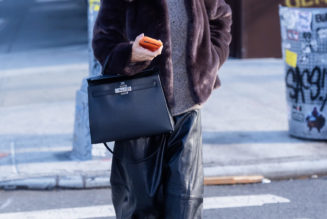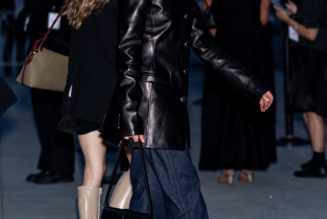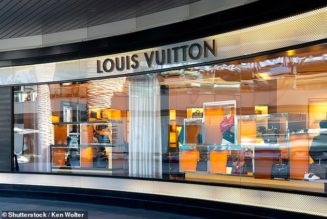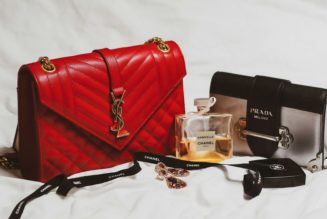It’s safe to say that the fashion industry has frequently failed to keep environmental concerns top-of-mind—here are the most prominent luxury brands striving to change that.
 Photo via Pexels
Photo via Pexels When one thinks of luxury fashion, the word “sustainable” isn’t usually the first descriptor that comes to mind, and for good reason. Aside from having a past riddled with the use of furs and exotic animal skins, high-end fashion continues to be one of the most wasteful and pollutive industries of the modern era.
For example, even highly conceptual pieces from upmarket brands including Balenciaga and Dolce & Gabbana are frequently constructed out of polyester, a synthetic textile whose production yields approximately two to three times more carbon emissions than that of cotton. Further, when washed, polyester releases harmful, non-biodegradable microfibers, which often find their way into the world’s rivers and oceans.
Likewise, in 2018, the British house Burberry came under fire after it was revealed that it had incinerated unsold clothes, accessories, and perfume worth roughly $38 million over the course of that year. Despite the fact that Burberry was harshly condemned at the time, this practice is still commonplace for several luxury labels who contend that sending these surpluses off to be recycled leaves them vulnerable to being stolen and, subsequently, sold on the black market at cheaper price points.
However, as of late, more than a few high-end brands have been making a more concerted effort to improve their sustainability practices. In December 2022, the Carbon Disclosure Project (CDP), a globally-oriented non-profit organization that helps companies evaluate their environmental impact, awarded its highest rating, a triple “A,” to the luxury giant LVMH. LVMH, which acts as the parent company for fashion heavyweights such as Louis Vuitton, Christian Dior, Givenchy, and Celine, was just one of 12 companies to achieve this status, making it a global industry leader in the realms of climate, forest, and water protection.
Thus, in an age when nearly every industry is taking action in one form or another, to mitigate their impact on the environment, fashion is no exception. Here are just a few of the luxury labels currently spearheading the use of more sustainable materials and practices in their everyday operations.
It’s simply impossible to discuss sustainable luxury fashion without mentioning one of the movement’s original trailblazers: Stella McCartney. Since launching her eponymous label in 2001, McCartney has seamlessly blended her trend-focused designs with eco-friendly materials.
She has been a pioneer in the use and development of new, alternative materials to ensure that her pieces maintain their green status, while still honoring the reputation of durability that a luxury price tag typically guarantees. Perhaps the best example of this is her signature “Falabella” bag, which has always been constructed out of vegetarian leather. The label has also come to adopt other sustainable materials including organic cotton, synthetic silks, upcycled faux furs, and recycled polyester. Today, Stella McCartney serves as an active member of the Ethical Trading Initiative, which ensures the careful selection of ethical suppliers, as well as a collaborator with several environmental conservation organizations, including Parley for the Oceans and Code REDD. Simply put, Stella McCartney is and has always been one of the fashion industry’s most environmentally conscious and game-changing labels.
There is no doubt that Gucci is currently one of the world’s most well-known fashion houses. Not only does its eclectic aesthetic grace billboards and Instagram feeds around the world, but it remains one of the premier labels dedicated to honoring classic Italian craftsmanship. In recent years, the brand has made a concerted effort to fulfill the sustainability objectives implemented by its parent company, Kering. These include guaranteeing that it makes 95% of its raw materials traceable, refraining from the use of animal furs, and reducing its carbon footprint. The Florence-based label has also implemented a series of policies approved by CanopyStyle, a non-profit that partners with fashion brands to prevent the deforestation of forests in their supply chains. These guidelines ensure that, going forward, Gucci reduces its use of chromium and other harmful chemicals used in its leather tanning processes. Further, in June 2020, the house launched its first wholly sustainable collection, dubbed “Gucci Off the Grid.” This capsule featured pieces made from organic cotton, recycled steel, regenerated polyamide, and ECONYL, a material made from post-consumer waste, including fishing nets and old carpets. Therefore, of the world’s most renowned fashion houses, Gucci is surely one to emulate where the development of an environmental conscious is concerned.
Since launching her eponymous label in 2015, Uruguayan-American designer Gabriela Hearst has been a champion of sustainable practices in the fashion industry. In 2017, she presented her inaugural runway show, which used 30% deadstock fabrics. She then followed this with the opening of her first flagship store in 2018, located on Madison Avenue in the storied Carlyle Hotel. The store itself was built without the use of synthetics or chemicals, but rather natural, non-treated reclaimed oak. On top of this, 90% of the material waste generated during the construction process was recycled. By 2019, the New York-based house had achieved the goal of being completely plastic-free in both its front- and back-of-house operations. It accomplished this feat by becoming the first brand to use biodegradable TIPA plastics, which decompose in roughly 180 days in compost conditions, for all of its packaging. Today, in addition to its highly sustainable packaging, each of the label’s garments is constructed with conscientious materials, including organic silk, cashmere, linen, and wool from Hearst’s Uruguayan ranch. With zero-waste store fronts, plastic-free operations, and mindfully sourced materials, Gabriela Hearst is no-doubt at helm of luxury fashion’s improving relationship with the planet.
When the late, great Dame Vivienne Westwood launched her namesake brand in the late 1970s, she not only brought her signature punk style to the high-end fashion scene, but her novel and sustainable approach, as well. Rather, her scrappy, DIY style of clothing construction promoted the practice of reusing materials and producing fewer pieces. Decades later, the legendary British label has stayed true to its de facto manifesto, “buy less, choose well, make it last,” by not only epitomizing the sustainability movement in fashion, but also by giving voice to it. Its most recent ready-to-wear collections have been made from over 90% lower-impact materials, including organic cotton, ethically produced wool, and recycled metals. However, not content with this, the house continues to experiment with material innovations and research the most sustainable methods of production possible. Another key aspect of Vivienne Westwood’s ubiquitous brand identity is its commitment to craftsmanship and heritage. By partnering with local industries in the United Kingdom, Europe, India, and Africa to source textiles in smaller batches, the label not only allows artisans to shine, but also guarantees it uses less wasteful methods of production. Although Westwood is no longer at the helm of her brand, her commitment to sustainability remains at the center of its core values.
Despite having rather modest roots in 1990s Stockholm, in recent years, Acne Studios has established itself as one of luxury fashion’s most sought-after labels. Its elevated minimalist aesthetic is both timeless and innovative, which has attracted a broad, diverse, and, most importantly, loyal clientele. Along with a unique and multidisciplinary approach to design, Acne Studios has quickly become a champion of sustainable clothing production on a large scale. From its inception, the Swedish brand has kept longevity at the forefront of its identity. More specifically, it emphasizes the importance of designing high quality products made for long-term usage. By thoughtfully selecting both its materials and construction techniques, it aims to reduce clothing waste in the future and, by extension, its larger carbon footprint. In 2020, it took this notion one step further with the debut of its sustainable line dubbed “Repurposed.” Since then, the label has kept the range going, using a variety of discarded offcuts and recycled fabrics to craft quarterly launches that are just as chic and inventive as the ones before. As Acne Studios’ popularity only continues to grow, so too does its reputation as one of the industry’s most environmentally conscious contributors.









